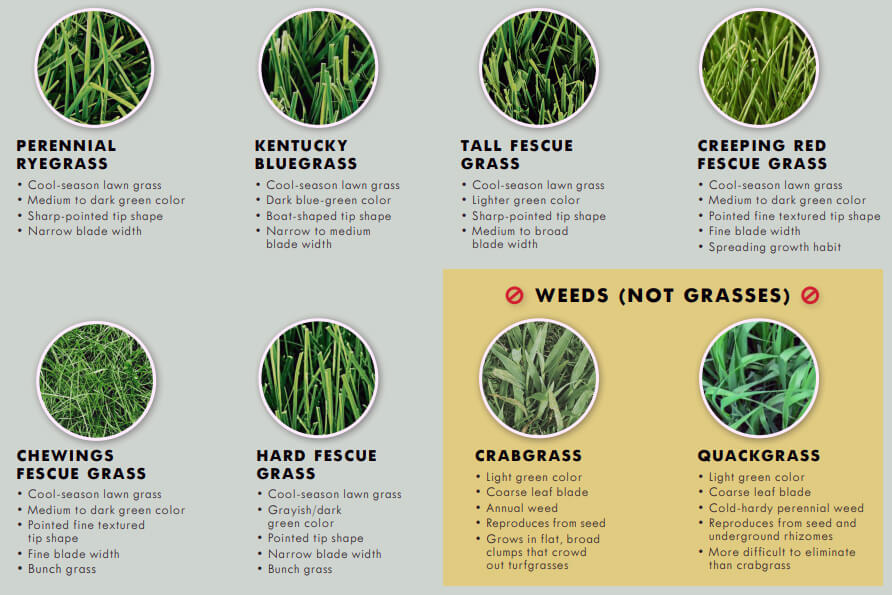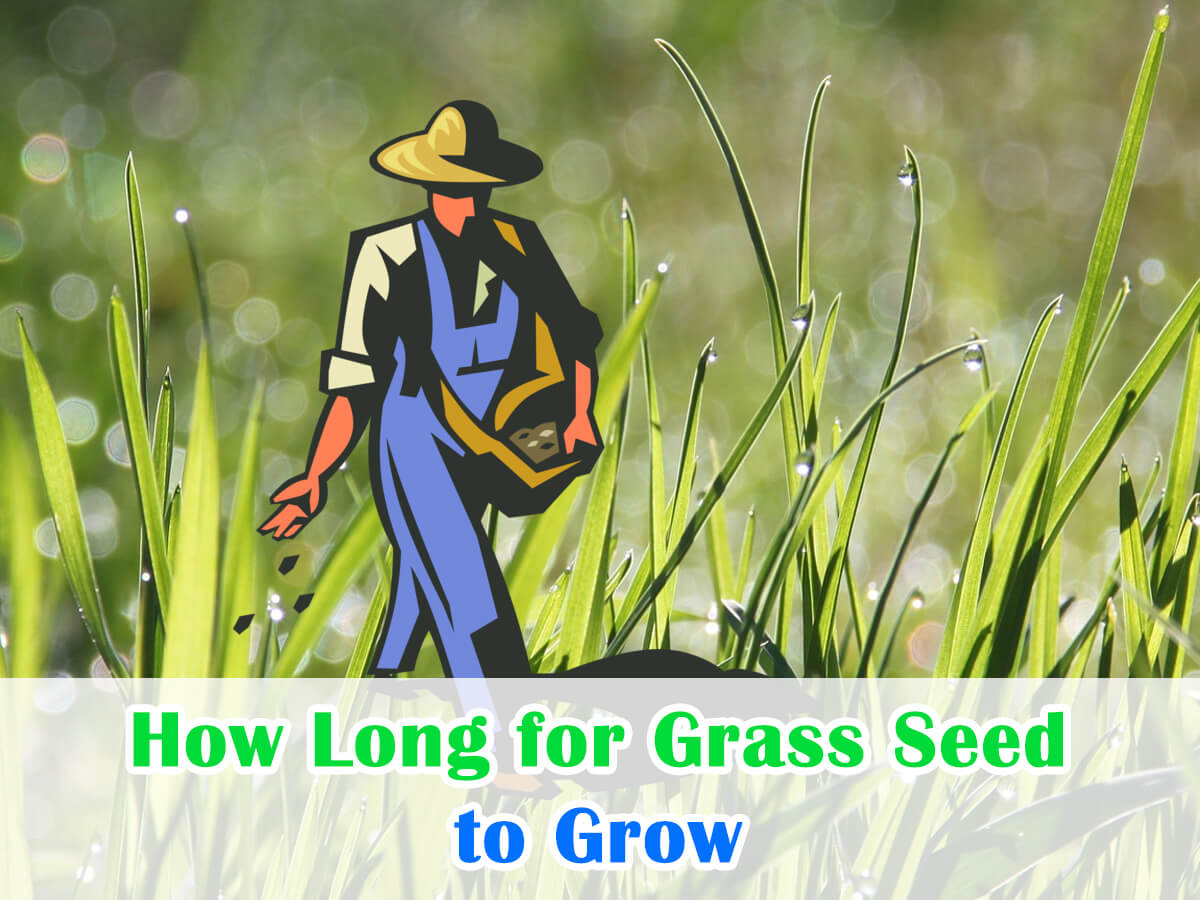Ah, the smell of freshly cut grass, the feel of it under your feet, the lush green sight from your window – there’s nothing like having a beautiful lawn of your own. But if you’ve ever tried growing grass from seed, you know it’s not always as simple as throwing some seeds down and waiting for the magic to happen.
“How long will it take for my grass seeds to grow?” I asked myself this question countless times while I was starting my first lawn. You see, this question is almost as common as “how is the weather today?” for anyone who decides to venture into the world of lawn care. In this article, I will share my personal experience and research about grass seed germination and growth. I hope it will help you on your journey to a beautiful lawn.
How Long for Grass Seed to Grow?
Most types of grass seed will start to germinate between 5 to 30 days after planting. However, don’t expect to see a lush lawn immediately. It can take 8 to 12 weeks or even longer for the grass to fill in completely.
Additionally, keep in mind that the time it takes for grass seed to grow varies depending on several factors. These include the type of grass seed you’re planting, the conditions in which you’re growing it, and how well you maintain it after planting.
Let’s take a closer look at these factors.
Types of Grass Seeds
Did you know that there are various types of grass seeds? From Kentucky bluegrass to Bermuda grass, and from ryegrass to fescue, the choices can be overwhelming. Each type of grass seed has its own unique characteristics, including how quickly it grows.
For instance, ryegrass is known for its rapid germination. It can start sprouting in as little as 5 to 10 days under ideal conditions. On the other hand, Bermuda grass, despite its popularity for lawn use due to its hardiness, may take up to 10 to 30 days to start germinating.
The grass seed type I chose for my own lawn was Kentucky bluegrass. The first time I planted it, I anxiously waited for the first signs of life, and after about 14 to 30 days, I saw tiny green sprouts popping up. It was a sight for sore eyes!
Here are a few more common grass types:

The Importance of Conditions
Just as we humans need proper food, water, and climate to grow, grass seeds too need the right conditions. Soil temperature, moisture, and sunlight are crucial for grass seed germination.
I learned the hard way that if the soil is too cold, the seeds will remain dormant. If it’s too hot, the seeds may dry out. The ideal soil temperature for most grass seeds is between 50 to 65 degrees Fahrenheit / 10 to 18.3 degrees Celsius.
Water, oh water! The day I realized the importance of regular watering, I promised never to neglect this crucial task. Grass seeds need consistent moisture to sprout. But remember, too much water can drown the seeds, while too little can dry them out.
Sunlight is another crucial factor. Most grass seeds need plenty of sunlight to grow well. On the other hand, some types, like fine fescue, can tolerate a bit of shade.
The following table lists the most common types of grass and their recommended growing conditions:
| Type of grass | Recommended growing conditions |
|---|---|
| Kentucky Bluegrass | This grass type prefers full sun, but can tolerate some shade. It requires medium to high amounts of water and thrives in cooler weather, with temperatures between 60 and 75 degrees Fahrenheit. |
| Bermuda Grass | Bermuda grass loves the sun and requires at least 6 hours of direct sunlight each day. It is drought-tolerant and can survive on low water amounts. It thrives in hot weather, usually above 75 degrees Fahrenheit. |
| Ryegrass | Ryegrass prefers full sun but can tolerate partial shade. It requires moderate to high amounts of water, especially during establishment. It thrives in cooler weather, with temperatures between 60 and 75 degrees Fahrenheit. |
| Fescue (Tall and Fine) | Fescue grasses are tolerant of a variety of conditions. They can grow in full sun to partial shade and have good drought tolerance, requiring less water than many other grass types. They can thrive in both cool and warm climates, but prefer temperatures between 50 and 75 degrees Fahrenheit. |
| Zoysia Grass | Zoysia prefers full sun but can tolerate light shade. It’s very drought-tolerant once established and prefers warm weather, usually above 80 degrees Fahrenheit. |
| St. Augustine Grass | This type prefers full sun but is highly shade-tolerant compared to other warm-season grasses. It requires moderate to high amounts of water and thrives in warm to hot weather, typically above 80 degrees Fahrenheit. |
| Buffalo Grass | Buffalo grass is a true sun-lover and isn’t well-suited to shady areas. It’s highly drought-tolerant and can survive on very low water amounts. It thrives in hot weather, usually above 80 degrees Fahrenheit. |
| Centipede Grass | Centipede grass prefers full sun but can tolerate light shade. It has good drought tolerance and prefers warm to hot weather, typically above 75 degrees Fahrenheit. |
| Bahia Grass | Bahia grass loves the sun and is highly drought-tolerant. It can thrive in various temperatures but prefers warm to hot weather, usually above 75 degrees Fahrenheit. |
| Carpet Grass | Carpet grass prefers full sun to partial shade. It requires moderate amounts of water and is well-suited to warm climates, typically thriving at temperatures above 70 degrees Fahrenheit. |
Regional Considerations When Growing Grass
Not all regions are created equal when it comes to growing grass. The local climate plays a significant role in the grass seed’s ability to grow.
If you live in a region with hot summers and mild winters, warm-season grasses like Bermuda grass or Zoysia grass are your best bet. They love the sun and are generally more drought-tolerant.
For those of you living in areas with cool summers and cold winters, cool-season grasses such as Kentucky bluegrass or ryegrass are a better fit. These grasses flourish in cool temperatures and usually have high drought tolerance.
One tip I found helpful was to speak to local garden centers or agricultural extension offices. They usually have a wealth of knowledge on the best grass types for the local area.
To demonstrate the entire process of grass growing, here is a very nice video from How to DAD:
Post-planting Care for Your Grass
Once the seeds are in the ground and the first sprouts start to appear, the real work begins. The journey from seed to a full, lush lawn requires patience and proper maintenance. This is true for any plant that you grow from seeds.
Regular watering is crucial during this stage. Avoid overwatering, as this can lead to disease or fungus.
You also need to be mindful of mowing. Wait until the grass reaches about three inches high before the first cut. This ensures the grass is strong enough to withstand the process.
I still remember the first time I mowed my new lawn. I was so excited, I nearly forgot to set the mower to the right height. Thankfully, I remembered just in time that mowing too low can stress the grass and impede its growth. So, I adjusted the mower to cut only the top third of the grass blades.
Another crucial aspect of lawn care is fertilization. During the early stages of growth, grass needs nutrients to establish strong roots and promote healthy growth. When my grass was about four weeks old, I applied a high-quality, slow-release fertilizer, which really seemed to give it a boost.
Fertilization is another critical aspect of lawn care, especially in the early stages when grass needs nutrients to establish strong roots and promote healthy growth. This is why I applied AgroThrive All Purpose Organic Liquid Fertilizer to my own lawn when it was about four weeks old.
AgroThrive provided my young lawn with the essential nutrients it needed, aiding in the development of robust roots and contributing to a healthier, greener lawn. This high-quality, organic fertilizer is not only effective but also environmentally friendly, making it a choice I felt good about. If you’re looking for a reliable, easy-to-apply fertilizer to boost your lawn’s health and resilience, I would wholeheartedly recommend going for AgroThrive.
Troubleshooting Tips for Common Grass Growing Problems
No journey is without its bumps, and growing a lawn from seed is no exception. Even with the best care, you might encounter a few challenges along the way. Don’t worry, though; with a little knowledge, most of these issues can be solved.
One common problem I faced was bare or thin spots in my lawn. This can happen for several reasons, such as uneven seed distribution or inadequate watering. To fix this, I learned to overseed the thin areas and keep them well-watered until new grass started to grow.
Another issue you might face is pests. Grubs, sod webworms, and chinch bugs can cause significant damage to a new lawn. They are not always easy to spot, so it’s crucial to keep a close eye on your lawn’s health. If you notice brown patches or areas where the grass is dying, it might be time to investigate. There are many pest control products available on the market, but always remember to follow the package instructions for safe and effective use.
Weeds is also a well-known enemy of the grass enthusiasts. Sometimes, it seems like weeds have a sixth sense about freshly planted lawns. It’s like they can’t resist the temptation to pop up and make themselves at home. I had my fair share of battles with weeds while nurturing my lawn.
Crabgrass, in particular, was one pesky intruder that decided to invade my lawn. It spreads quickly and can crowd out the young grass plants. So, how did I deal with this? Well, the key was to act fast. As soon as I noticed the crabgrass sprouting, I pulled it out, making sure to get the roots as well.
But the battle against the weeds sometimes demands a more serious weaponry. For widespread weed issues, a selective herbicide can be useful. These are designed to target specific weeds without harming the surrounding grass. After pulling the crabgrass wasn’t enough (and also did a number on my back), I turned to the trustowrthy Scotts Turf Builder Halts Crabgrass Preventer with Lawn Food & Hand-Held Spreader. It’s a well-known go-to product for many homeowners with lawns. This fantastic combo not only prevents crabgrass from invading the lawn but also nourishes the grass to ensure a greener, healthier look. It’s like a two-in-one defense and care system for your lawn, providing essential nutrients while keeping those pesky weeds at bay. The included hand-held spreader is user-friendly and makes application a breeze, allowing for even distribution of the product for optimum results. You can get it on Amazon by clicking here.
Another strategy against the invasive weeds is to maintain a healthy, well-fertilized lawn. Strong, dense grass is the best natural defense against weeds, as it leaves little room for them to grow. The healthier your lawn is, the less likely it is to have a weed problem.
In Conclusion
Growing grass from seed is a process that requires patience, care, and a little bit of know-how. But when you finally see that lush, green carpet covering your yard, all the hard work pays off.
After all the challenges and successes I had growing my own lawn, I can tell you that it takes time – usually several weeks – for grass seed to grow. The exact timeline will depend on the type of grass, the growing conditions, and the care you provide after planting.
Growing my own lawn was a journey filled with lessons and joys. The moment when I finally set foot on my thick, green grass for the first time was priceless. I hope that my experiences will inspire you on your journey to a beautiful lawn. So, go ahead, spread those seeds, and remember to be patient. Your dream lawn is just a few weeks away!
Happy gardening!



